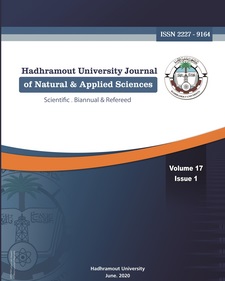Risk Factors, Comorbidities and Outcomes of Severe Acute Malnutrition among Children in Mukalla Maternity and Child Hospital, Hadhramout, Yemen
Keywords:
Severe Acute Malnutrition, Risk factors, Comorbidities, Outcomes, Children under 5 years of age, MMCHAbstract
Severe acute malnutrition (SAM) is one of the major health problems in Yemen. The aim of this study is to determine
the risk factors, comorbidities and outcomes of SAM in Mukalla Maternity and Child Hospital (MMCH) in AlMukalla city, Hadhramout Governorate, Yemen. We conducted a case-control study on 200 children aged 6 to 59
months (100 cases and 100 controls) who were admitted to the pediatric nutrition departments (MMCH) between
September 2018 and August 2019. The risk factors for SAM were children age 6-24 months (OR 2.99; CI: 1.66 -
5.36), residing in rural areas (OR= 1.83; CI: 1.04 - 3.23), who live in low-income families (OR= 2.35, 95% CI 1.04 -
5.30), with more than 5 people in the same family (OR 2.45; CI: 1.15 - 5.18) and who are their mothers illiterate
(OR= 3.36, 95% CI= 1.34 - 8.43). SAM was also significantly more prevalent among non-vaccinated children (OR=
35.85, 95% CI 15.59 - 82.41), exclusive breastfeeding less than 6 months (OR= 1.94, 95% CI: 1.00 - 3.75), initiated
complementary feeding before 6 months (OR= 2.17, 95% CI: 1.10 - 4.29) and bottle feeding ( OR= 2.67, 95% CI:
1.50 - 4.73). Most common co-morbidity significantly associated with SAM were diarrhea (OR= 7.12, 95% CI 3.72 -
13.64) and pneumonia (OR= 6.10, 95% CI 2.90 - 12.80). Among the 100 admitted children with SAM, 88% had
Marasmus, 9% had kwashiorkor and 3% had Marassmic- kwashiorkor. The majority 82% of SAM children
recovered, while 8% were discharged against medical advice and 10% died. Younger children aged less than two
years accounted for most of the admissions in this study. There is a need therefore for strengthening the infant
feeding practices by promoting exclusive breastfeeding for the first 6 months of life, followed by appropriate weaning
with continued breast feeding till second year of life.




